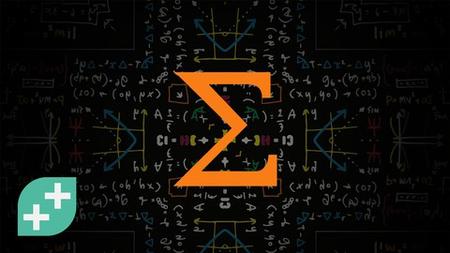English | MP4 | AVC 1920×1080 | AAC 44KHz 2ch | 122 lectures (13h 22m) | 4.73 GB
Learn Math for Video Game Design & Coding through Solving fun Video Game Problems
Maths and video games go hand-in-hand. Video games are a practical, challenging, and fun way to sharpen your math skills. What’s more, video games are like living math. From graphics and physics, to AI and movement, games are full of math.
Learn foundational math concepts relevant to game development. In the course we break it down and build it back up, block by block. For each skill you will start from an interesting real-world problem. You’ll always understand why you’re learning a concept, and feel motivated to solve the problem in hand. In the course you will learn:
- How to write and solve equations relevant to game development.
- Basic trigonometry the fun way, triangles, circles & stuff.
- Enough vector math to make 2D and 3D games.
- About imaginary & complex numbers, angles & quaternions.
The concepts learnt will help you create interesting scoring mechanics, have one object smoothly follow another, calculate the path of a projectile, target enemies using triangles and understand how random item drops work.
This course is the result of a successful Kickstarter, and consistent demand from our community of hundreds of thousands of students worldwide. There is a real need to improve math skills, not just for games, but for many areas of life. You’ll be amazed how much more colourful the world looks as your math improves.
All the math you learn will be reinforced with quizzes. You’ll write your own handwritten notes as you go, to help you remember your skills. We’ll translate some of the math to pseudocode so you can see how it applies to C#, C++, Python and any other modern language.
Get plugged into our communities of amazing developers on Facebook (nearly 20k), in our own TA-curated Community (17k views/day), and our student chat group (10k live at any one time).
You will get full lifetime access for a single one-off fee. The creators are qualified and experienced coders and avid gamers, so are able to explain complex concepts clearly, as well as entertain along the way.
What you’ll learn
- Fundamental math concepts
- Number base manipulation including binary, decimal and hex
- Addition, subtraction, multiplication and division in multiple bases
- IEEE754 floating point and why it matters
- Deeply understand vector space in 2D, 3D and higher!
- Trigonometry calculations such as sin, cos and tan
- More advanced vector math such as dot and cross products
- Projectile motion mathematics
- Combinatorics and probability theory and where to use it
Table of Contents
Introduction Arithmetic
1 Welcome To The Course
2 Addition Subtraction
3 Rounding
4 Multiplication Number Blocks
5 Division
6 Remainders
7 BODMAS
8 Squaring Cubing Powers
9 Sideways Calculators
10 Squaring Decimals
11 Reversing Powers
12 Charts Graphs 101
13 Area Under Chart 101
14 Gradient Of A Line
15 Distance Speed Time
16 Rates Of Change
17 The Magic of e
18 Logarithms 101
19 Logarithms Changing Base
20 Factorials Permutations
21 Number Bases
22 Scientific Notation
23 How To Pass Your First Math Checkpoint
24 What Now
Algebra and Equations
25 Introduction Algebra Equations
26 Algebra 101
27 Inequalities
28 Plotting Graphs
29 Gradient and Intercept
30 Linear Equations
31 Graphing Simultaneous Equations
32 Simultaneous Equations Substitution
33 Simultaneous Equations Elimination
34 Parallel Lines
35 Parabolas
36 The Quadratic Equation
37 Intercept Form
38 The FOIL Method
39 Vertex Form
40 Completing The Square Part 1
41 Completing The Square Part 2
42 Factoring Quadratics
43 Less than Two Roots
44 Section WrapUp
Introduction Angles and Circles
45 Introduction Angles and Circles
46 The Circle
47 What is Pi
48 Degrees and Radians
49 Triangles
50 Pythagorean Theorem
51 Sine Cosine and Tangent Part 1
52 Sine Cosine and Tangent Part 2
53 SOH CAH TOA
54 The Sine Rule
55 The Cosine Rule
56 The Sine Cosine Rules Explained
57 Solving Any Triangle
58 Graphing Sine Cosine and Tangent
59 Manipulating Sine Waves
60 Combining Waves
61 Section Wrapup
Vectors and Matrices
62 Introduction Vectors and Matrices
63 Reading and Writing Vectors
64 Magnitude vs Squared Magnitude
65 Coordinate Systems
66 Vector Addition
67 Scalar Multiplication
68 Normalizing Vectors
69 Zero Vectors
70 Dot Product
71 Cross Product
72 Reflection
73 Project on a Plane
74 What is a Matrix
75 Addition and Scalar Multiplication
76 Adjacency Matrix
77 Matrix Multiplication
78 Identity Matrix
79 Determinant
80 Matrix Inverse
81 Section WrapUp
Rotation Interpolation
82 Introduction Rotation and Interpolation
83 Vector Direction
84 Imaginary Numbers
85 Complex Numbers
86 Complex Multiplication
87 Polar Coordinates
88 Rotation Matrix
89 Euler Rotation
90 Gimbal Lock
91 What are Quaternions
92 Quaternion Multiplication Part 1
93 Quaternion Multiplication Part 2
94 Quaternion Rotation Part 1
95 Quaternion Rotation Part 2
96 LERP
97 SLERP
98 Easing Functions
99 Section WrapUp
Probability Statistics
100 Introduction Probability and Statistics
101 Exploring Data
102 Percentages
103 Sigma Notation
104 Averages
105 Outliers
106 Skewness
107 Interquartile Range
108 Standard Deviation
109 Correlation
110 Causation
111 Normalizing Data
112 Probability 101
113 Consecutive Events
114 Complement Rule
115 Theoretical vs Experimental
116 The Law of Averages
117 Bayes Theorem
118 Cumulative Distribution Function
119 Elo Rating System
120 Section WrapUp
Continuing Your GameDev Journey
121 Thats All Folks
122 BONUS Lecture
Resolve the captcha to access the links!
